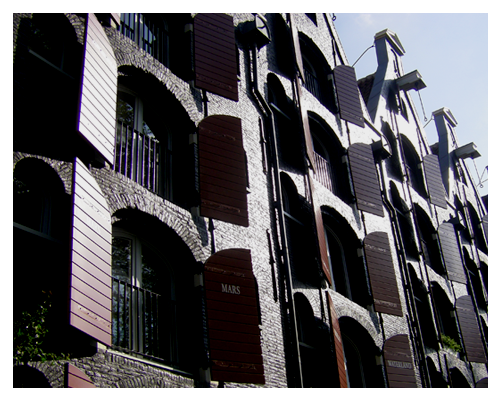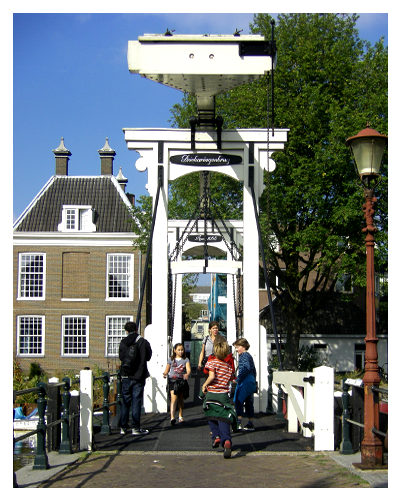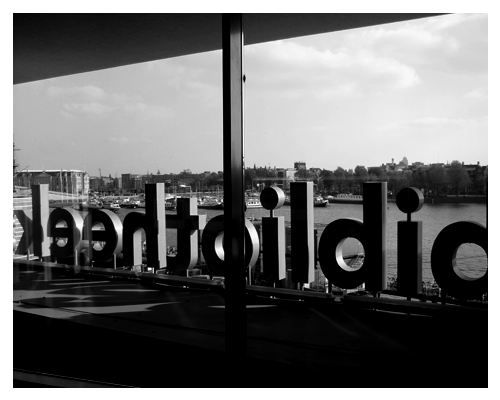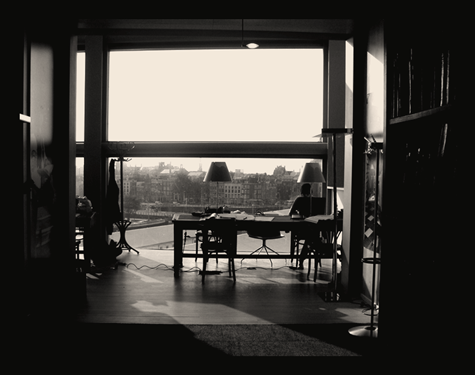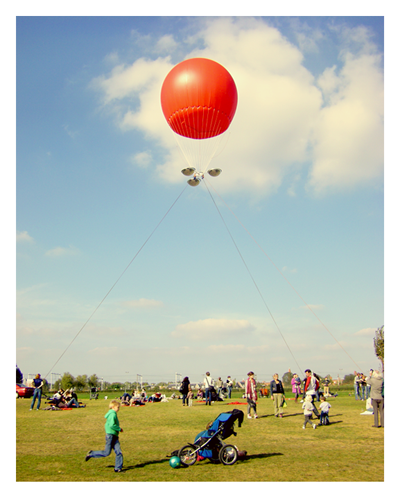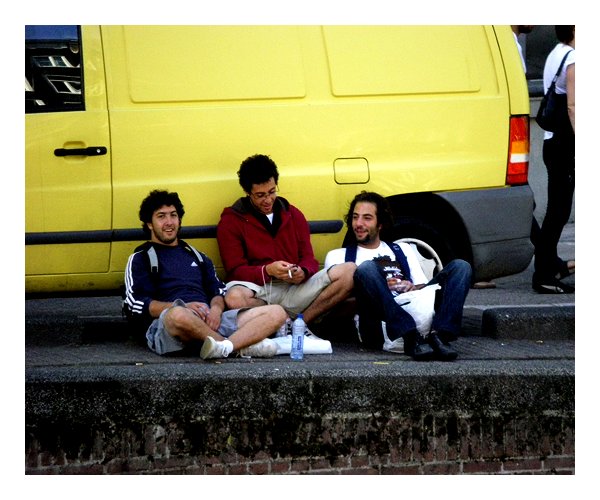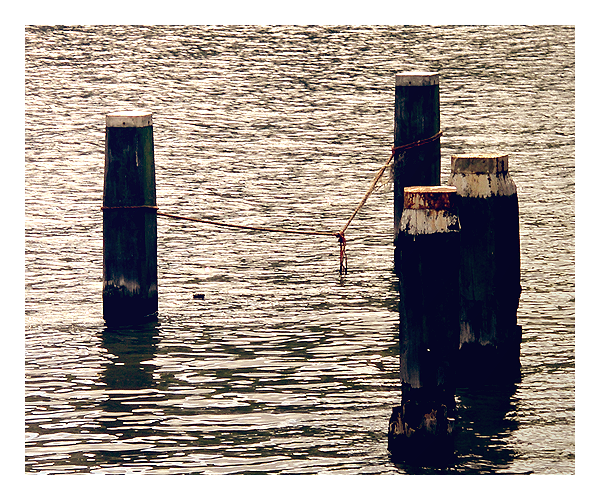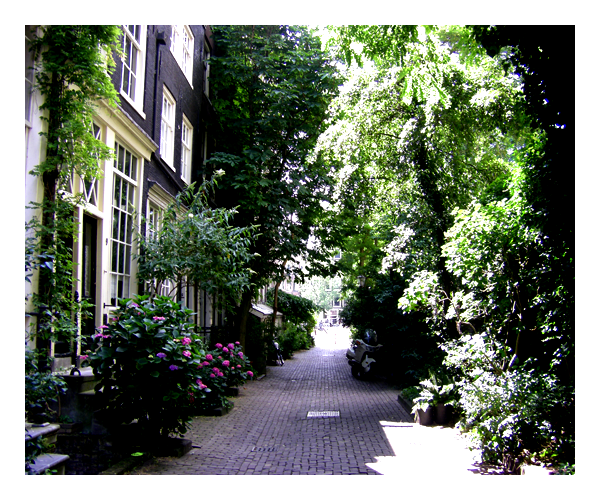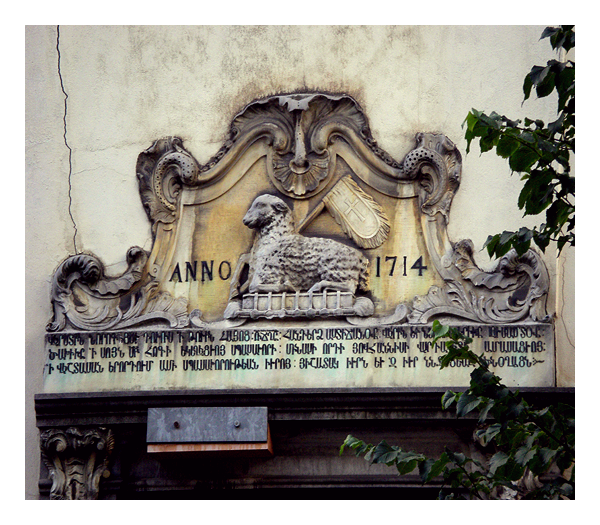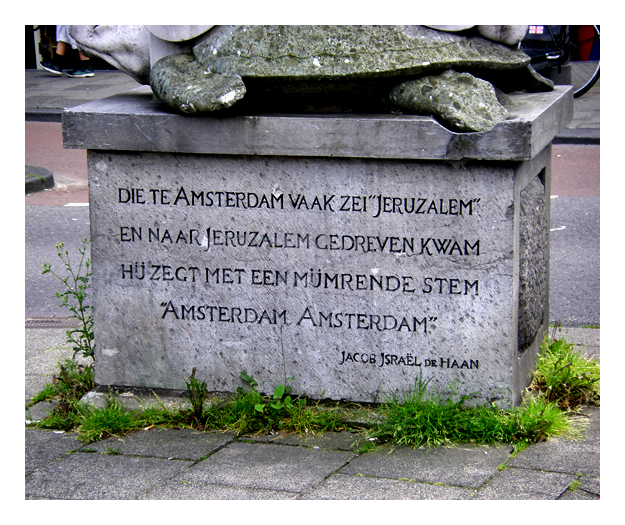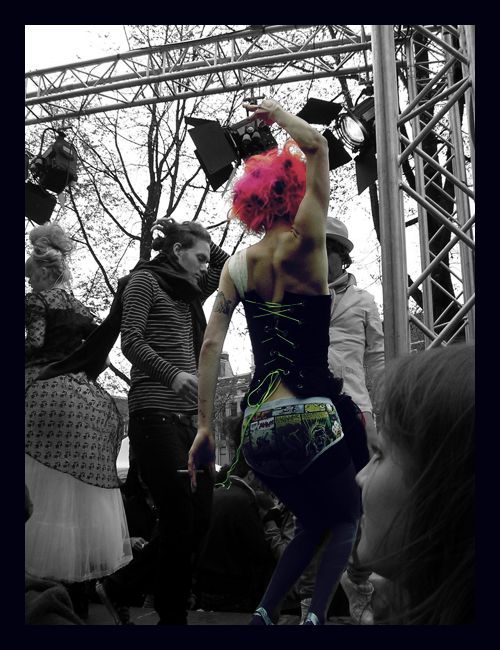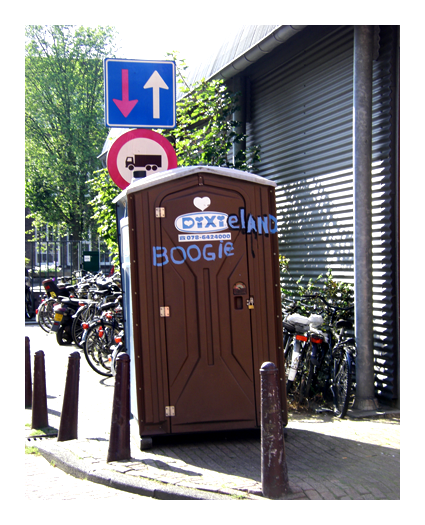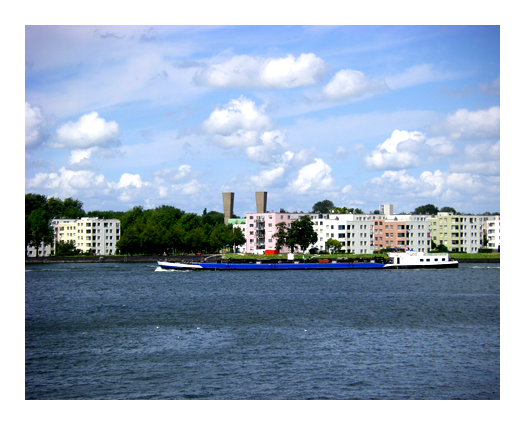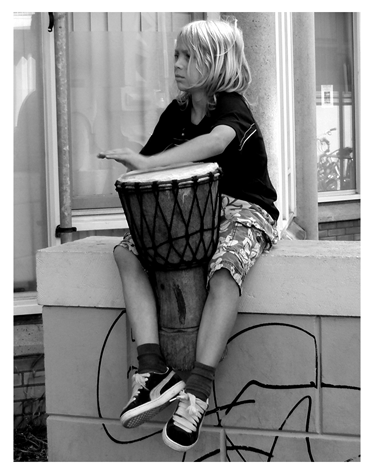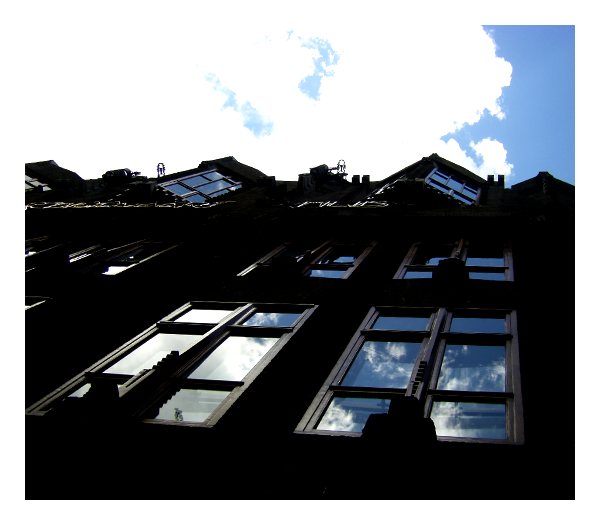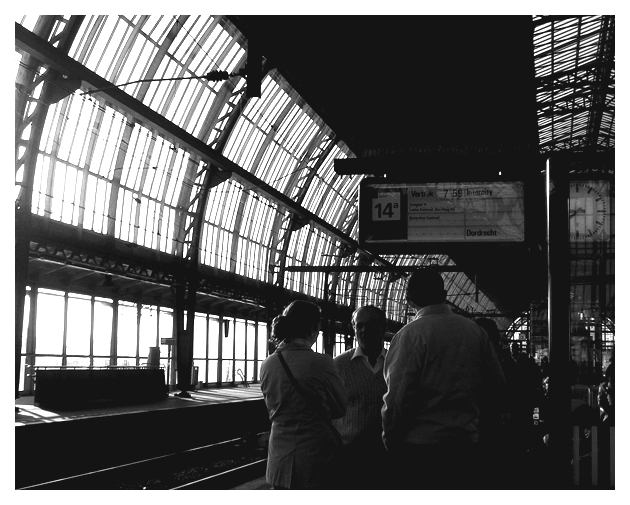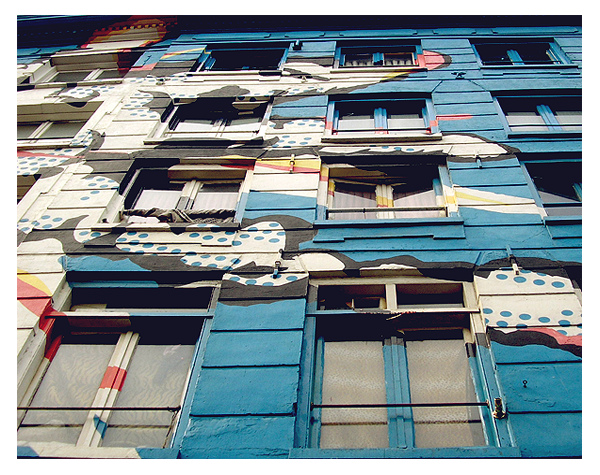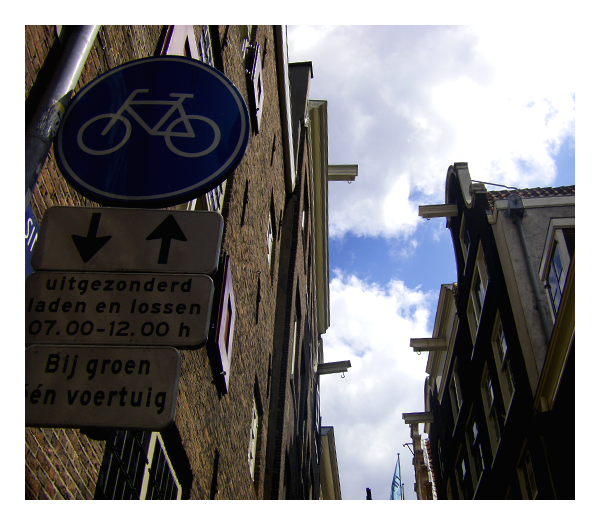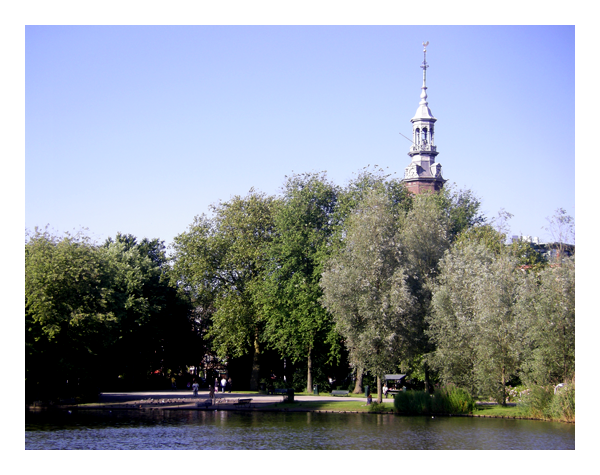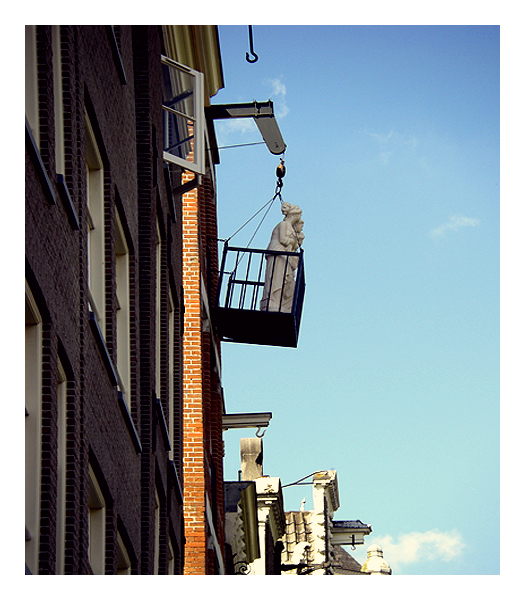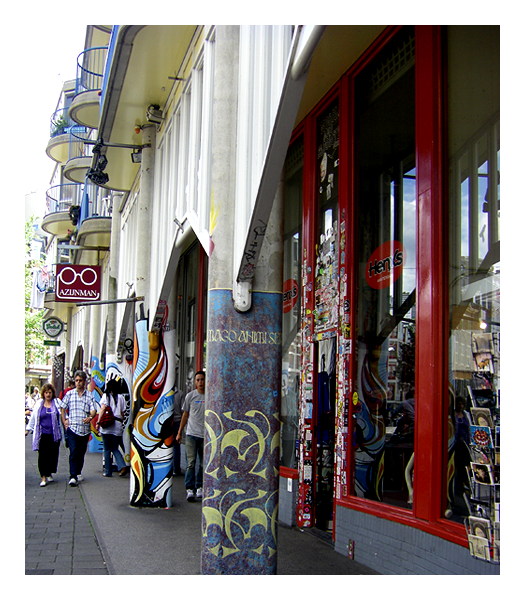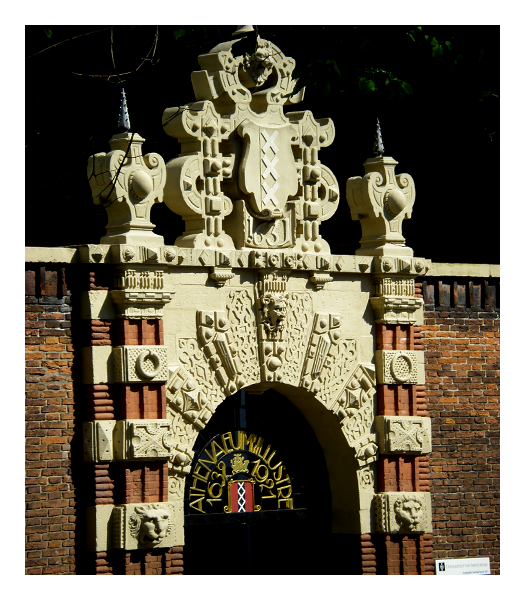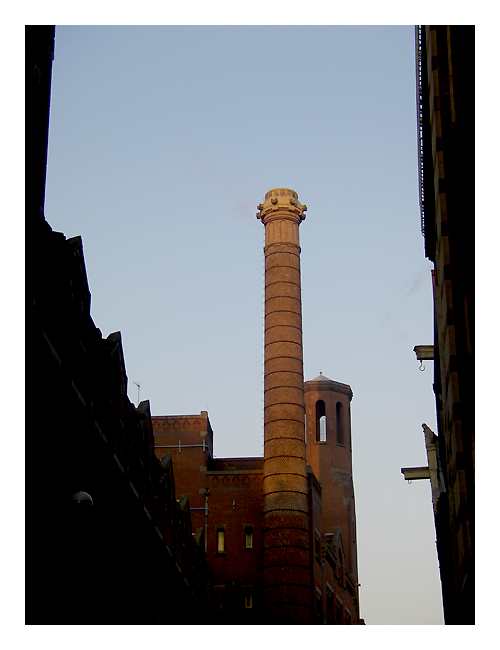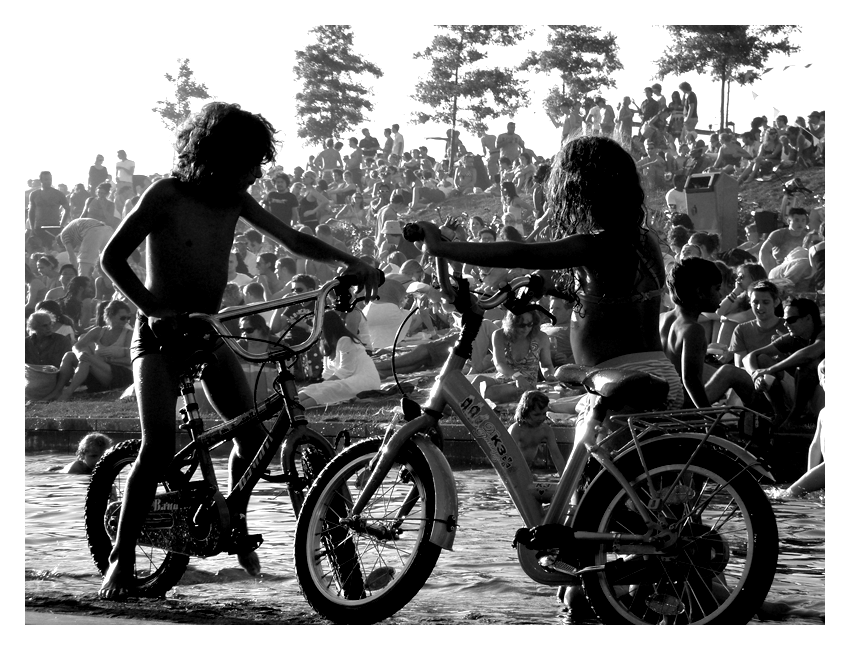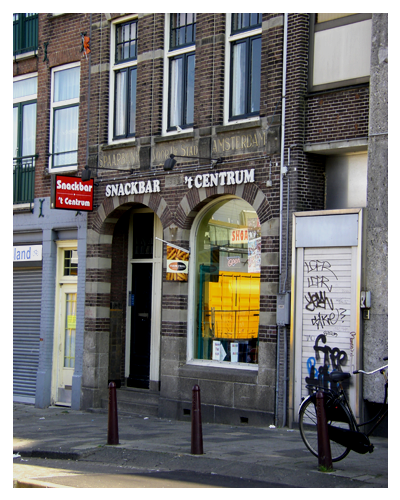
A less 'artistic' photo this time, of the only snackbar in this city I know of that sells a meal originating from the rival town of Rotterdam:
kapsalon (Dutch for 'hair salon'). You might wonder, why is a meal called 'hair salon'? It has something to do with the context in which the meal (which consists of chips, shoarma-meat, salad, cheese and garlic sauce all together; not very sophisticated, but 'good in a gross way') was developed: in a snackbar like the one on the photo, but this one was next to a hair salon, who's owner (the hairdresser) always asked for this particular dish around lunchtime!
Snackbars are only to be found in The Netherlands. Even if in another country a place is called 'snackbar', it doesn't come close to the kind of restaurant you see in this picture. Snackbars never close; if you're on your way home from a party at a time you're not even sure whether to call it night or already morning, the snackbar is there for you. They sell fast-food, but instead of burgers you can make a choice out of a variety of deepfried snacks. Just a grasp of the options presented to the hungry customar:
kroket (in the variations
rundvlees-, kalfs-, saté- or
goulash-),
frikadel (regular or
speciaal),
mexicano,
berenhap,
kaassoufflé,
nasischijf,
bamibal,
kipkorn, and ever since the Turkish/Arabian immigrants took over the places, there's also the possibility to order a Turkish pizza, shoarma or kebab. Chips and snacks can be eaten at one of the tables inside the snackbar, or they can be taken home in a white plastic bag without print. Fluorescent tubes make for an unforgettable ambience. The strips of green plastic 'grass' that seperate the different snacks from each other in their showcase, bring an esthetic touch to the whole. Meals rarely surpass the price of €4,-.
You can't say you've visited The Netherlands if you haven't been to a snackbar! ;)
